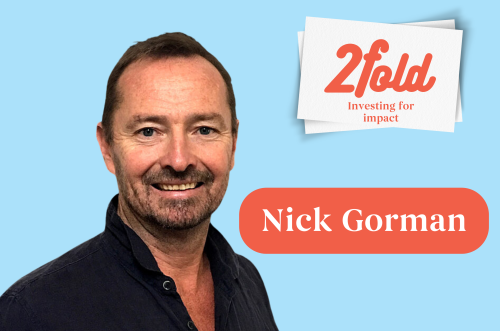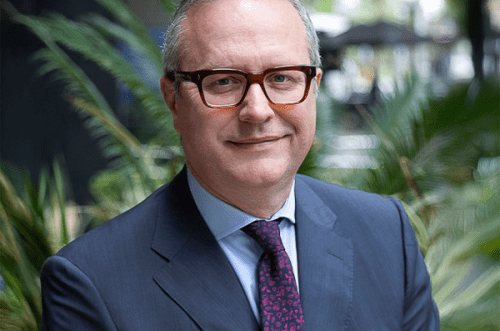We spoke with David Allen, Future Generation Global (ASX: FGG) pro bono fund manager and Head of Long Short Strategies at Plato Investment Management, about his perspective on the evolving landscape of active investing. He shared how data and technology are transforming the way investment decisions are made, while emphasising that human judgement remains critical.
You’ve had a cracking run of performance lately. What’s been driving those results?
Over the past 12 months, and really since inception, our shorts have been a major driver of performance. We’ve outperformed the market by about 12.5% p.a. since launch – and that’s in a period where the market itself has been very strong.
There are around 540 funds in the Morningstar peer group, and we’ve been ranked first in both overall performance and risk-adjusted performance since we launched a little over four years ago. Future Generation backed us early, which we’re very grateful for!
What’s stood out is that almost half of our outperformance has come from the short side, which is unusual because we run a 150/50 fund. That means for every $150 we’re long, we’re $50 short. Even with only a third of our exposure in shorts, they’ve delivered about the same contribution as the longs.
In Australia, that’s particularly rare. Historically, long–short managers have struggled to add value through shorts. There’s even the “widowmaker” trade – shorting the banks – that’s hurt plenty of investors as the banks just kept rising.
Our approach is very different. We’ve built a systematised red flag framework where there are 150 red flags that we can instantly apply to any company globally. Our research shows that companies with eight or more of these red flags underperform the market by around 20% over the following 12 months. It’s one of the most powerful predictive tools we’ve developed.
It helps us in two ways: finding great shorts and avoiding bad longs. Warren Buffett always says: “Rule number one: don’t lose money. Rule number two: don’t forget rule number one.” The red flags help us live that rule.
Can you give a few examples?
Sure, one was Boss Energy (ASX: BOE), a uranium junior that was a retail and broker favourite. It had 16 red flags; for example, there’d been significant vote against director pay, the CEO had been offloading stock and there were extremely high growth expectations. When we went short, a lot of brokers thought we were mad, but then the CEO resigned and they released a major downgrade in FY26 production guidance – and the stock dropped over 40% in a day.
Another was Botanix Pharmaceuticals (ASX: BOT) – a mid-cap darling that had never made a profit, had very aggressive accounting, and disappointing US sales. It fell over 50% in a day.
Even on the long side, the red flags save us. We were once long Cettire (ASX: CTT), the online luxury fashion retailer. It looked amazing – with revenue going from zero to $700 million in a few years – but the red flags kept building. We stuck to process and sold. Since then, it’s had three major profit warnings.
You’ve talked about “systematised red flags”, but aren’t most of those warning signs pretty obvious? Why don’t other managers catch them?
Great question. Thirty years ago, the challenge for investors was getting access to information. Now the challenge is too much information; it’s like drinking from a firehose. There’s a great quote from IBM that 90% of the data in existence today has been created in the past two years.
The trick isn’t identifying red flags, it’s automating and scaling that analysis. We track about 12,500 companies globally, using around 800 data sources. Every company is automatically scored on those red flags. If it’s not automated, it’s easy to miss things. We’re still fundamental investors, but we use technology to make better decisions.
Speaking of technology, where’s the edge? Is it in the data, or how you interpret it?
Both. We use traditional data, like financial statements, but also alternative data, like the anonymised credit card transactions of about 25 million consumers and cell phone–based foot traffic data.
If Home Depot suddenly has a surge in visitors, that tells you something before the quarterly report does.
We also use large language models, similar to ChatGPT, to analyse around 25,000 earnings call transcripts each year. We score the Q&A sections to see whether CEOs are actually answering questions or dodging them. Companies that are in the top 5% in terms of evasiveness tend to underperform significantly in the next 3-6 months.
It’s a fascinating blend of data, technology, and behavioural insight.
Do you think technology could eventually replace human judgment in investing?
I don’t think so. I think human and machine together beat machine alone.
History often rhymes, but it doesn’t repeat itself: you still need human context. When COVID hit, for example, there wasn’t a pandemic in our dataset.
I liken it to jumping on an A380 flight. I’m very happy that autopilot is there, but I’m not sure how keen I’d be to jump onboard without a pilot in the cockpit at all.
On the short side, how do you decide when to short something versus just avoiding it?
Lots of red flags are necessary but not sufficient. Many of these companies have great narratives – “blue sky” stories that really excite investors. Even if we think a stock’s a zero, we won’t short it until sentiment starts to turn south.
Take BrainChip Holdings (ASX: BRN). It had 22 red flags (most companies have one or two) and a $3 billion market cap despite barely any revenue. We didn’t short until sentiment soured.
Markets are only half logic; the other half is emotion and psychology. If you don’t capture both of those, you can get caught out.
Given markets have been buoyant for several years, has that made shorting harder?
Sure. Shorting’s toughest during what we call “junk rallies,” where everything rises – good or bad. We saw that about five years ago, and again recently with stocks like GoPro (NASDAQ: GPRO), Krispy Kreme (NASDAQ: DNUT), and Opendoor Technologies (NASDAQ: OPEN) which were up hundreds of percent on no real news.
Those types of environments that defy economic gravity can be particularly challenging. The shorts have given a little back recently, but overall performance over four years has still been strong.
Let’s turn to the long side. What’s been your best performer?
Rolls-Royce (LON: RR) has been one of our best. Most people think Rolls-Royce is cars, but it’s mainly aerospace and defence. With geopolitical shifts and pressure on Europe to rearm, defence spending is rising dramatically, from around 2% to potentially 3–5% of GDP.
That’s a long, visible growth runway. Rolls-Royce is up around 500% since we bought it.
Novartis (SWX: NOVN) is another. They’ve developed a breakthrough radiation therapy called radioligand therapy. Traditional radiation hits healthy and unhealthy tissue alike, but this targets only cancerous cells.
It’s already approved, reduces prostate cancer deaths by 28%, and could be effective across other cancers. In the latest quarter, sales for the cancer drug were up 45% year on year. It’s a very exciting prospect and it’s also always nice backing a company that does good too.
Any less well-known names you’re excited about?
Sure thing. A US pharmaceutical company we like that may be less familiar to an Australian audience is Amgen. They are developing an obesity/weight-loss drug that can be injected just once a month rather than weekly. The weight loss is potentially also more durable with less weight-regain compared to current GLP-1 therapies. It is definitely one to keep an eye on.
There’s been a lot of debate around US interest rates and whether the AI boom is actually a bubble. How are you positioning for that combination of macro easing and tech exuberance?
When you look at US valuations, the US market’s Shiller PE Ratio is around 39.5 – the top 3 percentiles of “expensiveness” since 1880. If anyone tells you US valuations generally are not stretched, you should politely excuse yourself from the conversation. But averages can mislead. There’s record dispersion between expensive and cheap stocks. That should be an active manager’s dream.
Take for example, Tesla (NASDAQ: TSLA) and General Motors (NYSE:GM). Tesla trades on a P/E (price-to-earnings ratio) of about 240 times, so for every dollar you invest, you get about 0.4 cents of current earnings. General Motors, meanwhile, trades on a PE of around 8, giving you 12.5 cents of earnings for every dollar. Of course, they are two very different companies and if Tesla’s bets on full self-driving and humanoid robots come off, then great.
But we don’t really invest on hope. We invest on hard numbers – and that will keep us from being overweight on names like Tesla.
The AI bubble, for me, is most extreme in private markets. The top 10 private AI companies are all loss-making, yet worth a combined US$1 trillion. That creates opportunities. There are a number of data centre and AI names with a lot of red flags that are really expensive on the short side of our portfolio. Because we’re long-short, we’re lucky because we can take advantage of these bubbles.
And finally, you manage money for free for Future Generation. What drew you to that?
We’re obviously in a very fortunate industry. It provides a very good livelihood, and we’re not exactly curing cancer. So, it’s important to stay conscious of that and to give back where we can.
Future Generation’s model really appealed to me because of the impact it’s having on young people. You only need to spend five minutes on the Future Generation website to see the incredible causes they’ve supported and the scale of the funding they’ve provided over the years.
It’s a privilege to be involved in something that channels the success of our industry into helping young people who really need it.








